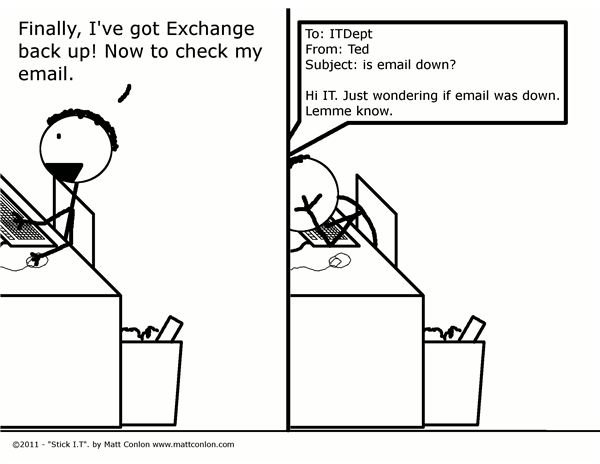What to Do if Your Firewall Blocks Outlook Web Access
Email Access
Email has not only become a handy tool for chatting with friends, but’s become a staple communication tool all across corporate America. Many companies choose to host their own email servers, and Microsoft Exchange is the most common server software. Hosting email in-house gives the company I very high degree of management over their email and spam. Users are able to connect their Outlook clients with the exchange server in just a few short steps, and have fast access to all their mail, contacts, calendars and memos.
Unfortunately, sometimes there is a need to access one’s corporate email when one is not on the same physical Local Area Network. A solution to this problem is Outlook Web Access (or OWA.)
What Is Outlook Web Access?
As part of the Microsoft Exchange installation, the server becomes the host to a website that users can use to access their email accounts without an email client program like Microsoft Outlook.
From within the LAN, users can typically browse to https://servername/exchange to connect to OWA. This is handy if they’re in a different area of the building and can’t quickly get to Outlook.
OWA can also be access from outside of the LAN so that users can get to their accounts from their homes or places with public internet access. This adds significant convenience, but it requires some additional configuration, particularly because it’s common that by default firewall will block OWA.
Image credit - original art by the author of this article.
OWA and your Firewall
One of the easiest ways to see if your firewall blocks outlook web access, try to connect to OWA from another machine on the same LAN. If OWA works locally, then most likely your firewall is not configured properly.
Outlook web access requires either port 80 traffic (for http) or port 443 (for https or SSL) traffic throughput to the email server. Check through your firewall rules to see if they are configured properly to forward incoming traffic on these ports to the email server. If you are unsure how to do this, consult a professional. One false move in your firewall can cause a connectivity outage for your entire enterprise
Additionally…
Some firewalls have web management capabilities that allow you to configure their settings via web browser. By default this sort of web management is configured to use either port 80 or 443 as well. If your firewall has web management enabled, it can interfere with Outlook Web Access, even if the firewall has all the proper rules to forward port traffic. I personally recommend that you disable web management of your firewall. If it’s absolutely vital that you have web management, change the ports to something else. 8080 and 4433 are common alternative port numbers, but you can use whatever you’d like.
References
All information in this article is the product of this author’s experience. The web comic “Stick I.T.” is written and drawn by this author.
